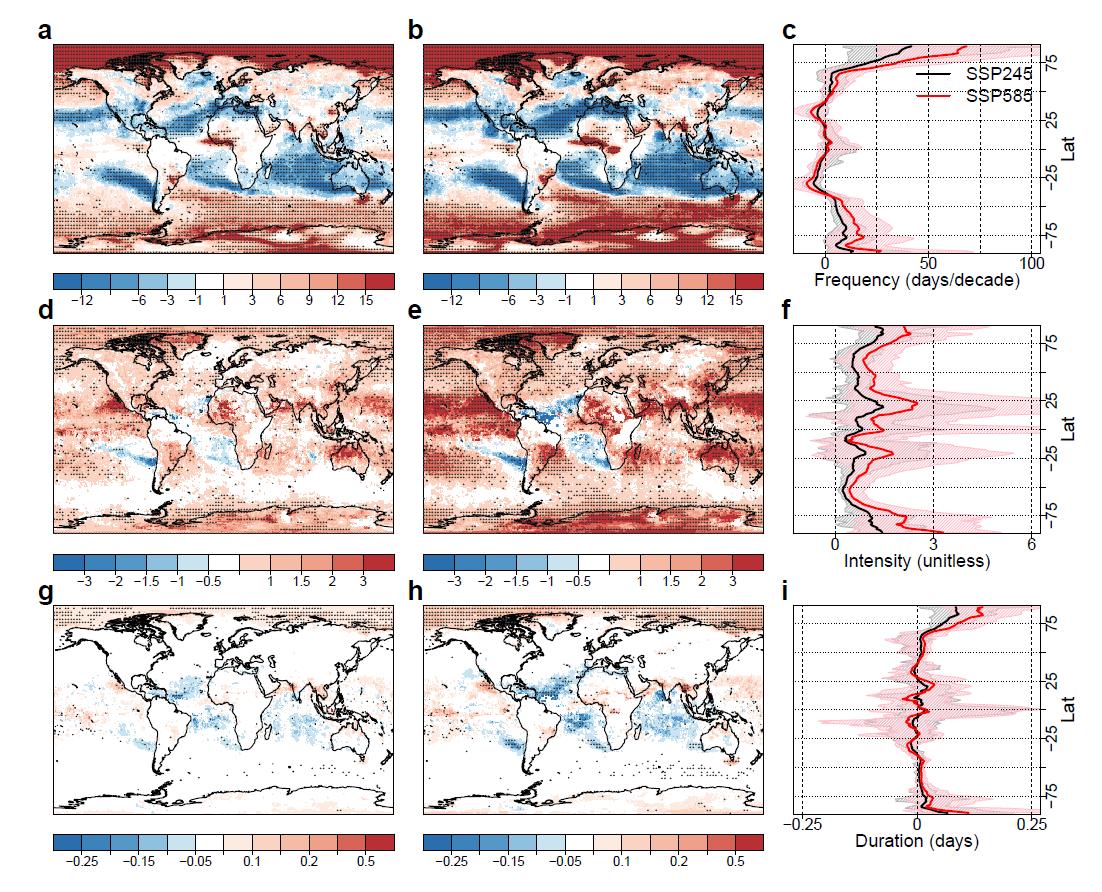Concurrent wind and precipitation extremes (CWPEs), a typical example of compound weather events, can lead to flooding and strong winds, disrupting public transportation, causing power outages, and damaging homes and shelters. Additionally, CWPEs over oceans can threaten the shipment of goods and logistics. However, our understanding of the projected changes, underlying drivers, and uncertainties associated with CWPEs in a warmer climate remains limited.
Recently, the research team led by Prof. YIN Baoshu from the Institute of Oceanology of the Chinese Academy of Sciences (IOCAS) revealed an intensification and poleward shift of compound wind and precipitation extremes in a warmer climate.
The study was published in Geophysical Research Letters on Jun 2.
Analyzing CWPEs both on global oceans and landmasses for the first time via state-of-the-art CMIP6 climate model simulations, the study reveals a poleward shift of CWPEs at the global scale by the late 21st century, with significant increases at latitudes above 50° in both hemispheres and decreases in the subtropics around 25°. Attribution analyses indicate that changes in precipitation extremes are the primary factor influencing future changes in the frequency and intensity of CWPEs.
Moreover, there are considerable uncertainties in regional projections of CWPEs due to structural model differences. The study highlights that these uncertainties stem from variations in model projections of CWPE drivers, which should be explicitly addressed in impact assessments to guide the development of robust adaptation strategies.
"By elucidating the spatial patterns of CWPE changes and their associated physical drivers, our study provides new insights for a more comprehensive understanding of the impacts of climate change on CWPEs," said Dr. LI Delei, first and corresponding author of the study. "We believe that these results will attract broad interest amongst communities of climate science, impact modeling, and risk assessments and management."
"Our study's incorporation of uncertainty analyses using the climate storyline approach holds the potential to aid the development of regional adaptation strategies for climate change," added Dr. Emanuele Bevacqua, the co-corresponding author.

Multimodel median projected changes (days/decade) in mean frequency of CWPEs between future (2071-2100) and historical (1961-1990) periods for (a) SSP245 scenario and (b) SSP585 scenario. Stippling indicates areas where changes are robust. (c) The zonal average of projected changes in mean frequency. (d-f) The same as (a-c), but for projected changes in mean intensity (unitless). (g-i) The same as (a-c), but for projected changes in duration (days).
Li, D., Zscheischler, J., Chen, Y., Yin, B., et al. (2024). Intensification and Poleward Shift of Compound Wind and Precipitation Extremes in a Warmer Climate, Geophys. Res. Lett., 51, e2024GL110135.
(Text by LI Delei)
Media Contact:
ZHANG Yiyi
Institute of Oceanology
E-mail: zhangyiyi@qdio.ac.cn
(Editor: ZHANG Yiyi)

